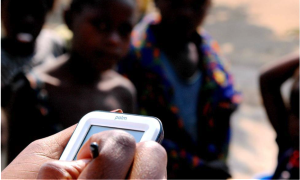
Measuring Full Nourishment
Business guru Peter Drucker said, “what gets measured gets managed”—and this statement holds for nutrients. With the ability to quickly and cheaply measure nutrient health in environment, soils, and people, new innovations and markets will emerge.
There is extensive evidence that a wide variety of micronutrients are essential for healthy natural ecosystems, soils, animals, and people. But routine monitoring of their abundance or scarcity in people (and the consequences thereof) happens for only a few—iron and anemia, for example. Lifestock are more carefully monitored for micronutrient deficiencies than are people, which says something about the value we place on human wellness and vitality compared to that of cattle. And comparative data on the nutrient richness of the soils in particular farms—and the nutrient density of the fruits and vegetables that are grown there—simply don’t exist. Nor can we readily assess whether a particular food product or nutritional supplement is keeping our zinc and magnesium and vitamin E at appropriate levels—labels do not report the bioavailablity of the micronutrients, which can vary 10-fold or more depending on the physical form in which they are present.

We need tools that can cheaply assess nutrient contents in a variety of settings. This is essential to helping us understand what nutrients we are missing and how we can incorporate them into people and the planet.
Nutrients for All is bringing together collaborators and experts who can develop the tools and technical expertise to measure nutrient content, nutrient form, nutrient absorption and retention in the body—the measurement capability essential to creation of a Nutrition Economy.
Innovators are already starting to develop these tools. For example low-cost, non-invasive, point-of-care devices exist for measuring some micronutrient levels in people. Others are developing mechanisms for assessing soil nutrition. Still, these tools are just starting to understand the scope of nutrients to be measured–we need more! Do you have expertise in this area? Get Engaged!
For more information about the need for metrics and data systems for measuring full nutrition, click here.